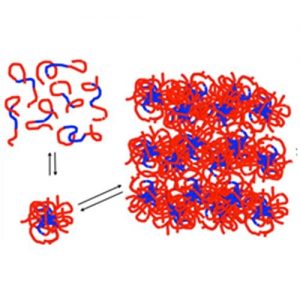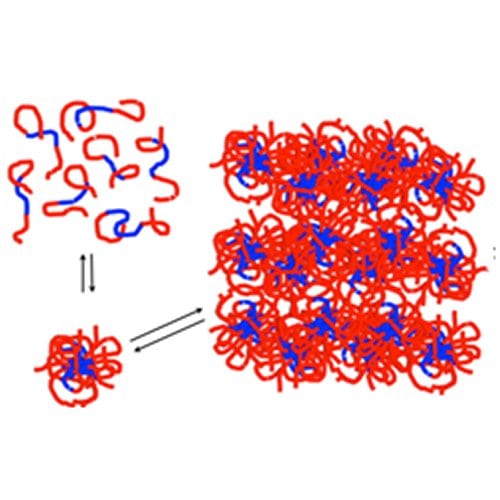 While the incorporation of ionic liquid monomers into polymers has recently received increasing attention, ionic liquid-based block copolymers have been studied much less. Some stimuli-responsive systems with potential applications as dispersion agents or coating materials have been reported in the past.
While the incorporation of ionic liquid monomers into polymers has recently received increasing attention, ionic liquid-based block copolymers have been studied much less. Some stimuli-responsive systems with potential applications as dispersion agents or coating materials have been reported in the past.
John Texter and co-workers (Eastern Michigan University, USA) now report the controlled atom transfer radical polymerization (ATRP) of a unique type of symmetric triblock copolymer based on telechelic poly(propylene oxide) and end-functionalized ionic liquids. The resulting highly water soluble triblock copolymer, poly(ILBr-b-PO-b-ILBr), is multi-stimuli responsive. It exhibits classical surface activity in lowering surface tension at the air-water interface and in modifying wetting in waterborne coatings. It also immunizes model colloids against coagulation induced by Debye-Hückel (indifferent electrolyte) electrostatic screening. The poly(ILBr) endblocks are stimuli-responsive to certain anions, such as hexafluorophosphate, which induces precipitation by converting the hygroscopic imidazolium bromide groups into hydrophobic imidazolium hexafluorophosphate ion pairs.
Finally, this new triblock copolymer also exhibits thermoreversible gel formation by warming through an LCST (lower critical solution temperature), adding a new class of block copolymer to the group known to exhibit thermoreversible behavior. The structure of this gel phase has not been established yet, but it most likely is a lyotropic liquid crystalline phase of poly(ILBr-b-PO-b-ILBr) micelles. This gel phase may be used to template new zeolites.

















